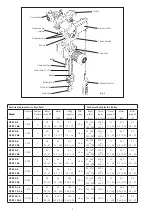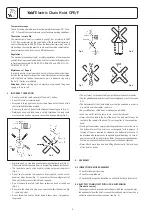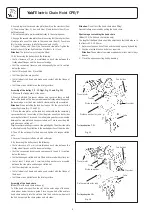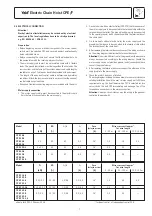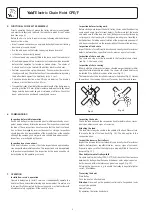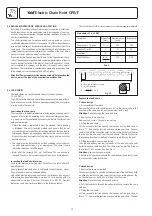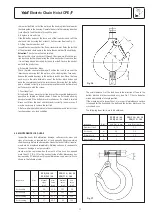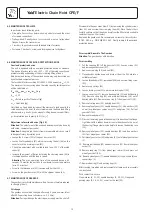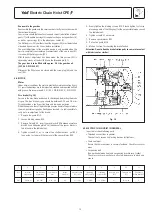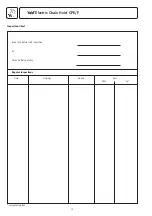
Electric Chain Hoist CPE/F
4
Temperature range
The units can be operated in ambient temperatures between -20° C and
+50° C. Consult the manufacturer in case of extreme working conditions.
Theoretical service life
The electric chain hoist is classifi ed to group 1 Am according to FEM
9.511. Basic principles for the calculation of the theoretical remaining
service life are given in BGV D8. When the theoretical remaining service
life has been reached, the electric chain hoist should be subjected to a
general overhaul (also refer to para 8 Maintenance).
Regulations
The accident prevention act and/or safety regulations of the respective
country for using manual and electric hoists must be strictly adhered to.
In Germany these are BGV D6, BGV D8, BGR 500 and VDE 0113-32 /
EN 60204-32 :1999.
Maintenance / Repair
In order to ensure correct operation, not only the operating instructions,
but also the conditions for inspection and maintenance must be complied
with. If defects are found or abnormal noise is to be heard stop using
the hoist / trolley immediately.
Attention:
Before starting work on electrical components the power
supply is to be cut off .
3. INCORRECT
OPERATION
• Do not exceed the rated capacity of the hoist / trolley.
• Do not lift stuck or jammed loads.
• Excessive inching operation by short and frequent actuation of the
control switch should be avoided.
• Do not use the hoist /trolley for the transportation of people (Fig. 3).
• Welding on hook and load chain is strictly forbidden. The load chain
must never be used as a ground connection during welding (Fig. 4).
• Avoid side pull, i.e. side load on either housing or bottom block (Fig. 5).
Lift only when the load chain froms a straight line between both hooks.
• The load chain must not be used for lashing purposes (sling chain)
(Fig. 6).
• Do not knot or shorten the load chain by using bolts, screws, screw-
drivers or other devices (Fig. 7). Load chains that are integral part of
the hoist/trolley are not allowed to be repaired.
• Do not remove the safety latch from suspesion hook or load hook
(Fig. 8).
• Do not use the chain end stop as an operational limit device (see Fig.
1 - chain end stop).
• Do not throw the hoist or trolley down. Always place it properly on
the ground.
• The unit must not be operated in potentially explosive atmospheres.
• The longitudinal downward slope of the carriageway must not exceed
0,3 %.
• The adjustment of the trolley width must not be extended in order to
e.g. obtain a smaller radius curvature.
• Any modifications of the hoist or trolley are prohibited.
• Load can not fall into the loose chain - risk of chain break!
• Never attach the load to the tip of the hook. The load must always be
seated in the saddle of the hook. This also applies to the suspension
hook.
• Turning of loads under normal operating conditions is not allowed, as
the bottom blocks of the hoists are not designed for this purpose. If
turning of loads is required as standard, the bottom blocks have to
be provided with swivel hooks supported by axial bearings. In case of
queries consult the manufacturer. Beim Drehen einer angehobenen
Last darf sich die Lastkette unter keinen Umständen mitdrehen.
• Never attach more than one load lifting attachment to the load hook
of the hoist or trolley.
Fig. 5
Fig. 6
Fig. 8
Fig. 7
4. ASSEMBLY
4.1 INSPECTION BEFORE ASSEMBLY
• Check for transport damage
• Check for completeness
• Check that the capacity indication on hoist and bottom block match.
4.2 ELECTRIC CHAIN HOIST WITH HOOK SUSPENSION
(Standard version)
The suspension hook is connected to the hoist with two suspension pins.
Independent of how the hoist is reeved the load hook must always hang
vertically under the suspension hook (see Fig. 9).
Fig. 4
Fig. 3
Summary of Contents for CPEF
Page 15: ...Electric Chain Hoist CPE F 15...
Page 16: ...Electric Chain Hoist CPE F 16...
Page 17: ...Electric Chain Hoist CPE F 17...


